home > articles > theology > Understanding Biblical Language
 Language is more than just words. Each time I travel to another country where English is not the national language, I like to learn a few phrases in that language to help me get by. The hardest language I have attempted is Vietnamese. I was quite proud that I had learned the phrase- “How much is this?” and found that amazingly I was understood by the first Vietnamese shopkeeper I tried it on. But then my limited grasp of Vietnamese was exposed when the shopkeeper responded in Vietnamese (with words that meant nothing to me)! Like many Asian dialects, it not only uses sounds, it also uses tones. Depending on how you say a word, like “ma” will determine whether you are referring in Vietnamese to your mother or a family ghost! When we try to understand a foreign language from the perspective of our familiar language we make certain assumptions that will actually hinder us from both appreciating the foreign language and translating it correctly. For example, in a Belgrade elevator was a sign for English-speakers-
Language is more than just words. Each time I travel to another country where English is not the national language, I like to learn a few phrases in that language to help me get by. The hardest language I have attempted is Vietnamese. I was quite proud that I had learned the phrase- “How much is this?” and found that amazingly I was understood by the first Vietnamese shopkeeper I tried it on. But then my limited grasp of Vietnamese was exposed when the shopkeeper responded in Vietnamese (with words that meant nothing to me)! Like many Asian dialects, it not only uses sounds, it also uses tones. Depending on how you say a word, like “ma” will determine whether you are referring in Vietnamese to your mother or a family ghost! When we try to understand a foreign language from the perspective of our familiar language we make certain assumptions that will actually hinder us from both appreciating the foreign language and translating it correctly. For example, in a Belgrade elevator was a sign for English-speakers-
To move the cabin push button for wishing floor. If the cabin should enter more persons, each one should press a number for wishing floor. Driving is then going alphabetically by national order.
Even more confusing are some of these foreign signs-

Any wealthy person with a dangerous lump would dread a sign like this! The rest of us though would be left wondering what on earth this could mean? Translating from one language to another is more than just finding the equivalent words. The richness of language is in its use of idioms (figures of speech, like “the sun goes down“), metaphors (word pictures, like “it’s raining cats and dogs”), and analogies (comparing something with another, like “he runs like the wind”). The problem for translators is conveying these language devices into another language. It necessarily means that translators become interpreters. That is rather than just translating words, they are translating the intended meaning.
UNDERSTANDING THE BIBLE AS A LANGUAGE
 When it comes to understanding the Bible we are thankful to diligent translators who convey the intended meaning of a passage from the original Biblical language (Hebrew, Aramaic, and Greek) into English. But there is an aspect of the Bible’s ‘language’ that goes beyond just the words that are used. If you really want to understand the Bible, you have to appreciate its language. In fact, much of the Old Testament serves the purpose of establishing the language of Scripture. Almost immediately the it teaches us the language of numbers. Its opening chapter teaches us that ‘7’ relates to “complete”. Knowing this helps the reader to understand why John’s Gospel contains: 7 “I AM” statements by Christ; 7 miracles of Christ; 7 sermons by Christ; in a book of 21 chapters. By the middle of Genesis we told that Joseph dreamed of Israel (his family) as being like “the sun, moon, and stars” (Gen. 37). And the prophets, including Christ, would use this same metaphor for Israel as becoming darkened, falling from the skies, and no longer giving forth its light whenever Israel ceased to fully obey God and reflect His light (Joel 2, Matt. 24). In Genesis chapter 3 we are introduced to Christ as The Seed, a term filtered through Abraham then applied to all the redeemed in Christ (Galatians 3:28-29). The Biblical term “the elect” relates to this Seed not by ethnicity but by spiritual redemption through Christ.
When it comes to understanding the Bible we are thankful to diligent translators who convey the intended meaning of a passage from the original Biblical language (Hebrew, Aramaic, and Greek) into English. But there is an aspect of the Bible’s ‘language’ that goes beyond just the words that are used. If you really want to understand the Bible, you have to appreciate its language. In fact, much of the Old Testament serves the purpose of establishing the language of Scripture. Almost immediately the it teaches us the language of numbers. Its opening chapter teaches us that ‘7’ relates to “complete”. Knowing this helps the reader to understand why John’s Gospel contains: 7 “I AM” statements by Christ; 7 miracles of Christ; 7 sermons by Christ; in a book of 21 chapters. By the middle of Genesis we told that Joseph dreamed of Israel (his family) as being like “the sun, moon, and stars” (Gen. 37). And the prophets, including Christ, would use this same metaphor for Israel as becoming darkened, falling from the skies, and no longer giving forth its light whenever Israel ceased to fully obey God and reflect His light (Joel 2, Matt. 24). In Genesis chapter 3 we are introduced to Christ as The Seed, a term filtered through Abraham then applied to all the redeemed in Christ (Galatians 3:28-29). The Biblical term “the elect” relates to this Seed not by ethnicity but by spiritual redemption through Christ.
BIBLICAL IDIOMS, ANALOGIES, & METAPHORS
In recent times the Bible has undergone several severe attacks. One newly released book, by a former graduate of Wheaton College, who now denounces Christ and the Bible, claims that the Bible is unreliable, scientifically faulty, historically inaccurate, and not preserved to its original edition. This attack on the Bible by someone who had one of the finest evangelical educations available is bewildering. He confuses preservation with inspiration when it comes to understanding God’s Word. He fails to identify and distinguish idioms, analogies and metaphors in the Bible. A failure in this regard is an admission of literary-laziness when it comes to understanding the language of the Bible.

READING THE BIBLE LITERALLY
When the Bible says that the trees of the field “clap their hands”, or that the sun “rises” and goes “down”, or that the stars of the heavens “fall from skies”, we are in danger of misunderstanding these statements if we claim that they must be understood in a wooden literal sense. To read the Bible literally means that we accept the intended meaning of a passage. To do this we must identify and distinguish Biblical idioms, analogies and metaphors. If we fail to understand that certain Biblical genealogies are more analogical than genealogical (such as the one in Matthew 1 which divides the genealogy of Christ into three groups of 14 generations, where “14” is an analogy to David – the Hebrew word for David is DWD, which in Hebrew, also spelt gematria, is where letters in an alphabet are assigned a numerical value. Thus words can have a gematria number which identifies them.” Unless we understand that in this instance the use of gematria equals “14” we will fail to appreciate what the Biblical author was intending to communicate. Biblical genealogies served a purpose greater than merely detailing a family lineage which is why Great Grandfathers are sometimes referred to as being “the father of…” That’s why many of the Bible’s genealogies are not exhaustive (not every generation is listed) but rather particular, making it very difficult to make accurate chronological calculations based on them.
Reading the Bible ‘literally’ involves converting these idioms, analogies and metaphors into their intended meaning. Critics of the Bible who fail to do this present what they consider to be the “errors” of Scripture when they cite supposed scientific errors within Scripture, such as Ecclesiastes 1:5 –
The sun also rises, and the sun goes down,
And hastens to the place where it arose.
Critics of the Bible claim that verses like this erroneously claim that the Bible teaches that the earth is stationary and the Sun revolves around it. But the expression “the sun rises”, “the sun goes down”, are accepted idioms for the start and end of a day. The writer intends to convey a timeframe reference, not a cosmological argument!
“PLENARY” INSPIRATION
 The Bible claims to be inspired by God (2Timothy 3:16). But unlike the claims of other religions, the Bible presents its inspiration as ‘plenary’ not ‘mechanical.’ Mechanical Inspiration is the idea that God dictated every word of the Bible to men who merely wrote them down in a mechanical fashion. Plenary Inspiration on the other hand is the idea that God inspired men to write His Word in their words with the result being totally inspired by God. This means that Scripture contains expressions, figures of speech, and words that both the author and his original audience understood.
The Bible claims to be inspired by God (2Timothy 3:16). But unlike the claims of other religions, the Bible presents its inspiration as ‘plenary’ not ‘mechanical.’ Mechanical Inspiration is the idea that God dictated every word of the Bible to men who merely wrote them down in a mechanical fashion. Plenary Inspiration on the other hand is the idea that God inspired men to write His Word in their words with the result being totally inspired by God. This means that Scripture contains expressions, figures of speech, and words that both the author and his original audience understood.
“The biblical authors did not simply take dictation from God. They were not mere secretaries or automatons, but they were faithful to proclaim the whole message from God without adding to it or taking away from it (Proverbs 30:6; Revelation 22:18-19). God used the individual personalities, vocabularies, literary styles, and conscious desires of the biblical authors to produce His Word. Thus, while being completely from God, the words of Scripture are also human words in particular human languages (Hebrew, Greek, Aramaic) expressed in distinctive human literary forms that include narrative (Samuel), poetry (Psalms), and parables (Gospels), as well as metaphor (John 15:1-8), some allegory (Galatians 4:21-5:1), and even hyperbole (Psalm 6:6; Luke 14:26).”
Dr. Norman Geisler, “Who Made God?: And Answers to Over 100 Other Tough Questions of Faith”, Zondervan, 2003, page 108
Plenary Inspiration means that God allowed human perspective into His Sacred Text. From a human perspective certain Biblical expressions make sense (like the sun rising and setting), and even certain time-frame references (the Hebrews regarded a new day beginning at sunset while Romans regarded it as sunrise which explains why some time-frame differences occur between the various Gospel accounts).
TRANSLATION ERRORS?
One of the strongest attacks made against the Bible is that it is full or errors due to copying mistakes (both deliberate and unintentional). Some of the treasured doctrines of Christianity, it is claimed, by people like Bart Ehrman in his book, ‘Misquoting Jesus’, were never endorsed by Christ but were invented centuries later and added to Scripture then. But we know with the highest degree in certainty that the Bible we have today is indeed what God has originally inspired. This is because of the vast number of ancient manuscripts of the Bible that have been discovered (over 5,000) concur with what we have today. But another attack on the Bible is that no two of these manuscripts agree in the exact wording of their text. Firstly, this is not true. These manuscripts reveal amazing agreement regarding the original text of Scripture. In the occasional verses where certain words are different, translators are able to use a literary reconstruction device called ‘Textual Criticism’ to determine the original text. They do this by comparing the all the available manuscripts. Dr Norman Geisler illustrates Textual Criticism this way-
“Yo# have won 20 million dollars.”
“You #ave won 20 million dollars.”
“You h#ve won 20 million dollars.”
Dr Geisler goes on to say that because the error is in a different place each time, it actually helps us to be more sure of what the intended message is (page 121). According to New Testament Textual Critics such as Sir Frederick Kenyon and Dr A.T. Robertson, we can be 99.9% certain that our modern Bibles are completely faithful to the original text.
 Thus, the language of Scripture is comprised of more than just words. Reading the Bible “literally” doesn’t just mean taking its words in a wooden literal sense – it means taking it the way the author intended. This is one reason why doing “word-studies” can actually be detrimental to arriving at a correct understanding of Scripture. Pursuing the intended meaning of Scripture demands that we become more than just readers of the Bible and become students of the Bible as well. Those who take the time to do this will find that the Bible is truly God’s Word and that it is without error. And for those seeking to hear the voice of God, understanding the Word of God helps us to become familiar with the language of God so that we can recognise the voice of God.
Thus, the language of Scripture is comprised of more than just words. Reading the Bible “literally” doesn’t just mean taking its words in a wooden literal sense – it means taking it the way the author intended. This is one reason why doing “word-studies” can actually be detrimental to arriving at a correct understanding of Scripture. Pursuing the intended meaning of Scripture demands that we become more than just readers of the Bible and become students of the Bible as well. Those who take the time to do this will find that the Bible is truly God’s Word and that it is without error. And for those seeking to hear the voice of God, understanding the Word of God helps us to become familiar with the language of God so that we can recognise the voice of God.
May God grant us the understanding we need to learn the language of His Word.
¶ And we know that the Son of God has come and has given us understanding, so that we may know him who is true; and we are in him who is true, in his Son Jesus Christ. He is the true God and eternal life.
First John 5:20
© Dr. Andrew Corbett, August 14th 2007
This article may be copied and distributed if due credit is given to the author, the article is not altered, and the website- https://www.findingtruthmatters.org – is hyperlinked or referenced.
2 Comments
Submit a Comment
-
Sale!
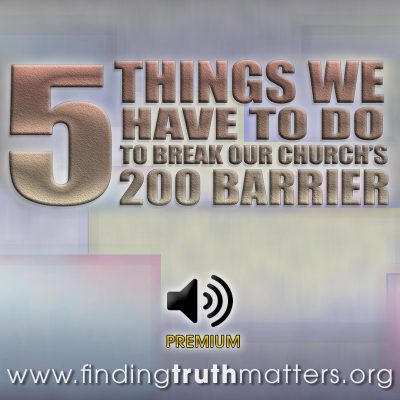
5 Things We Need To Do To Break Our Church’s 200 Barrier, Premium Audio
Original price was: $1.75.$0.95Current price is: $0.95. -
Sale!

A Morning With Izaak Walton – The Compleat Man, Premium Audio
Original price was: $1.75.$1.25Current price is: $1.25. -
Sale!
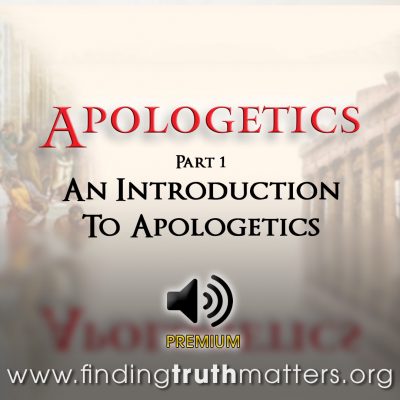
Apologetics Part 1 – Introduction To Apologetics, Premium Audio
Original price was: $1.75.$0.95Current price is: $0.95. -
Sale!
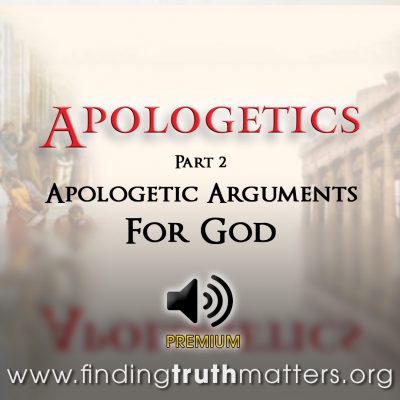
Apologetics Part 2 – The Apologetic Arguments For God, Premium Audio
Original price was: $1.75.$0.95Current price is: $0.95. -
Sale!
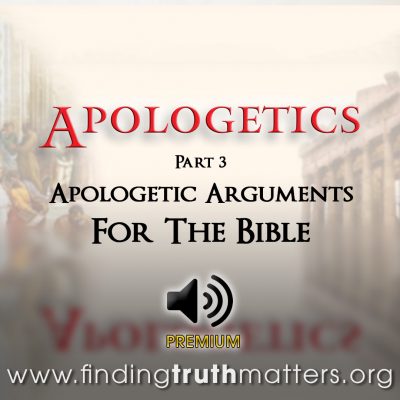
Apologetics Part 3 – The Apologetic Arguments For The Bible, Premium Audio
Original price was: $1.75.$0.95Current price is: $0.95. -
Sale!
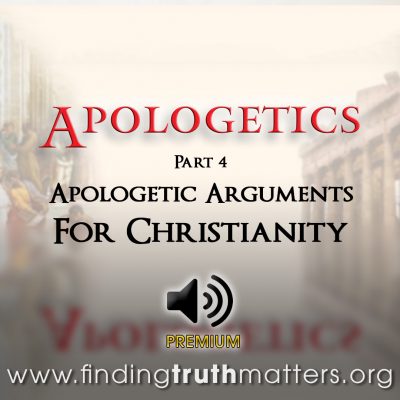
Apologetics Part 4 – The Apologetic Arguments For Christianity, Premium Audio
Original price was: $1.75.$0.95Current price is: $0.95.
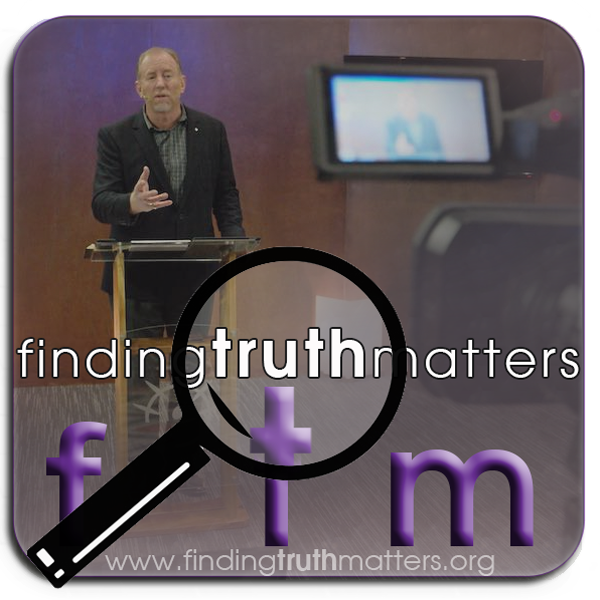







































BEAUTIFUL!
Thank you for this enlightment